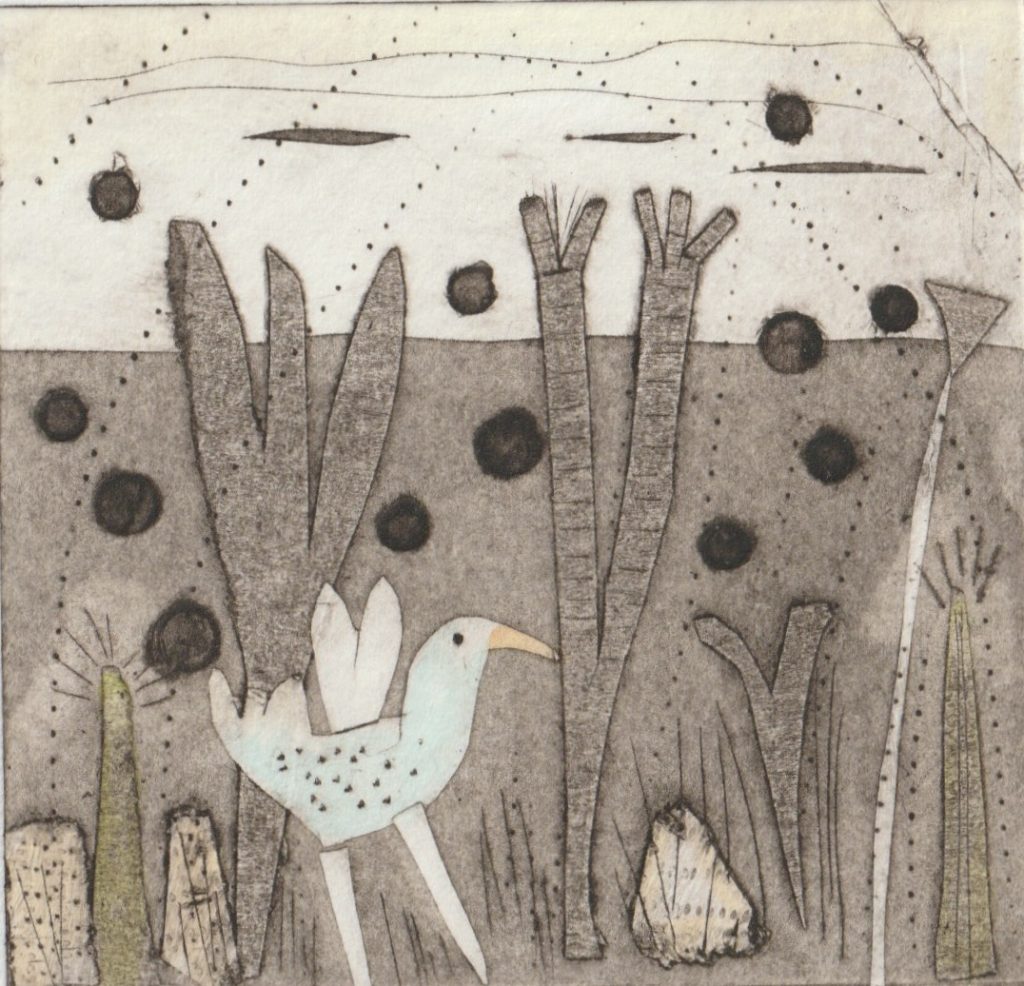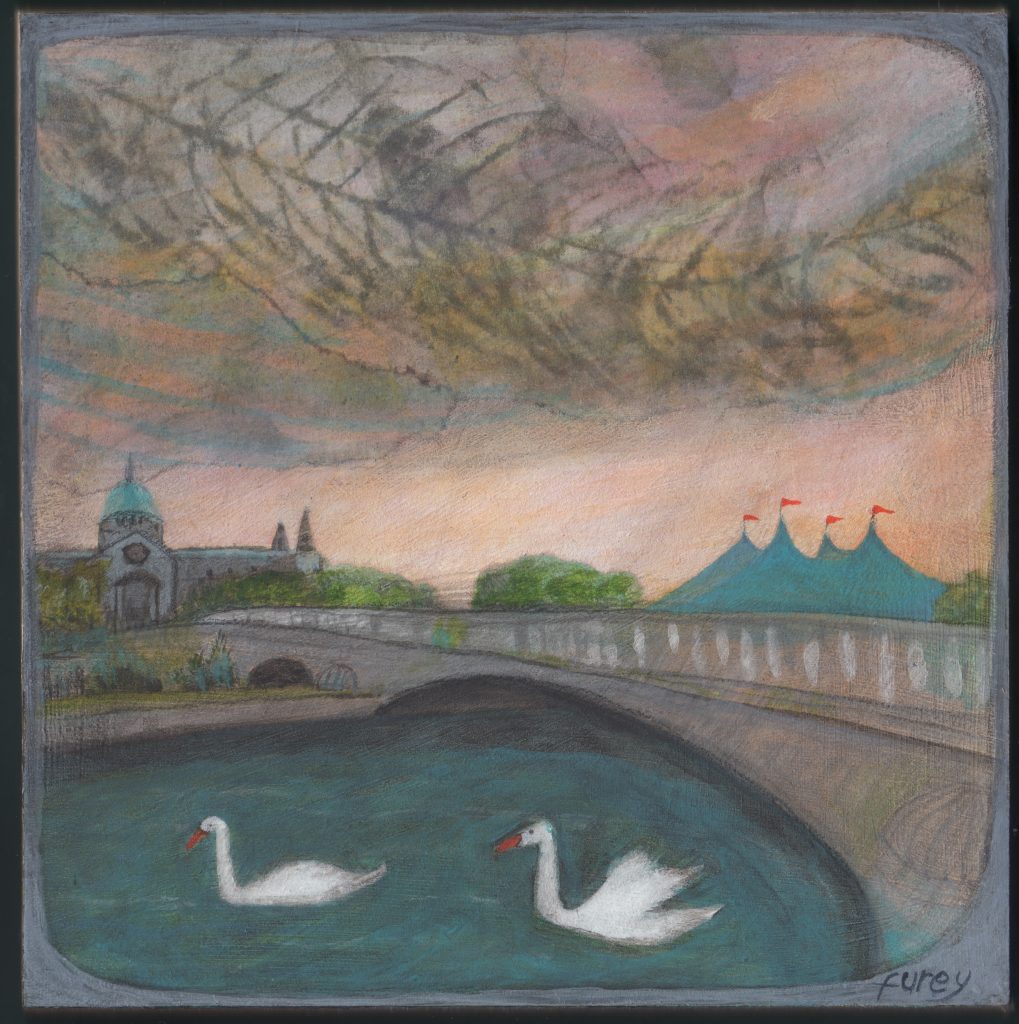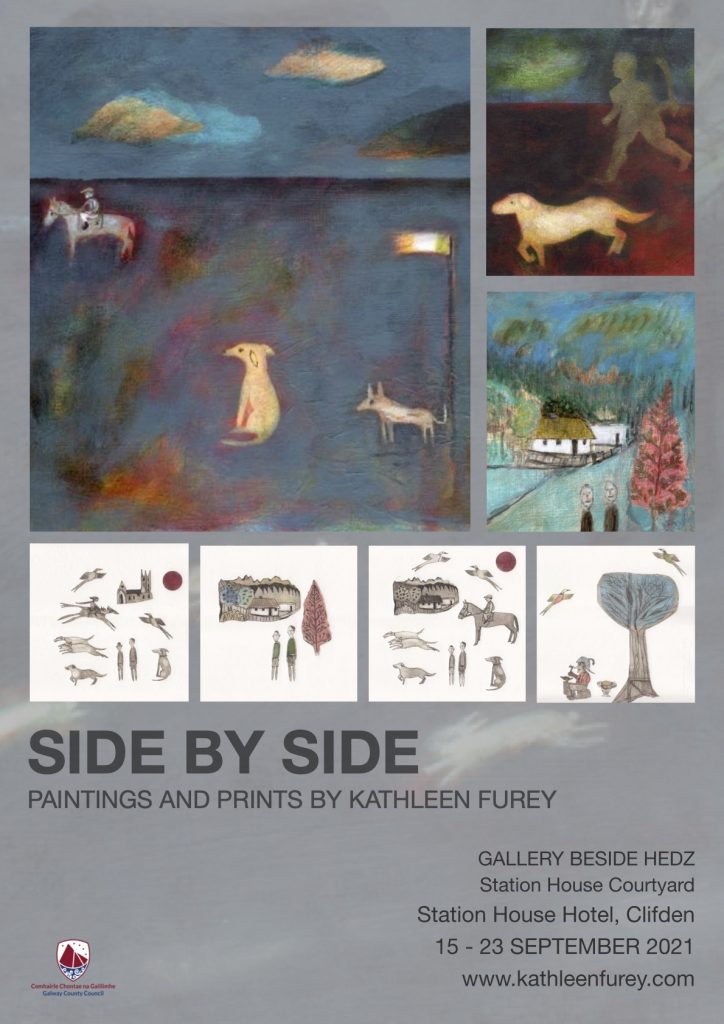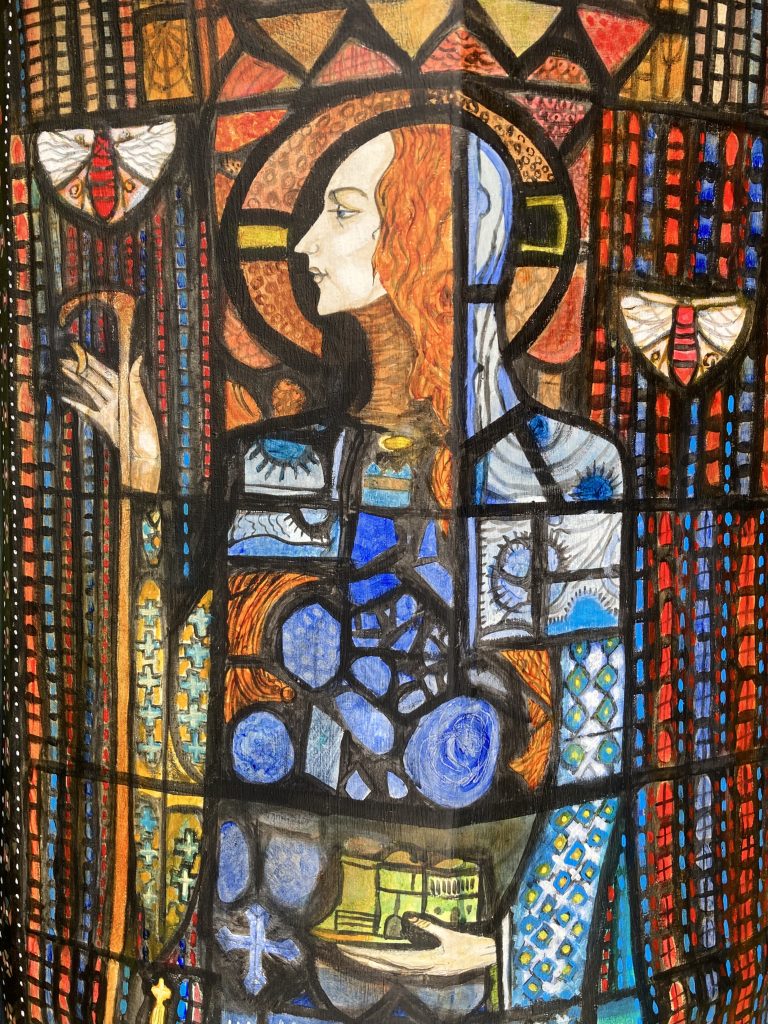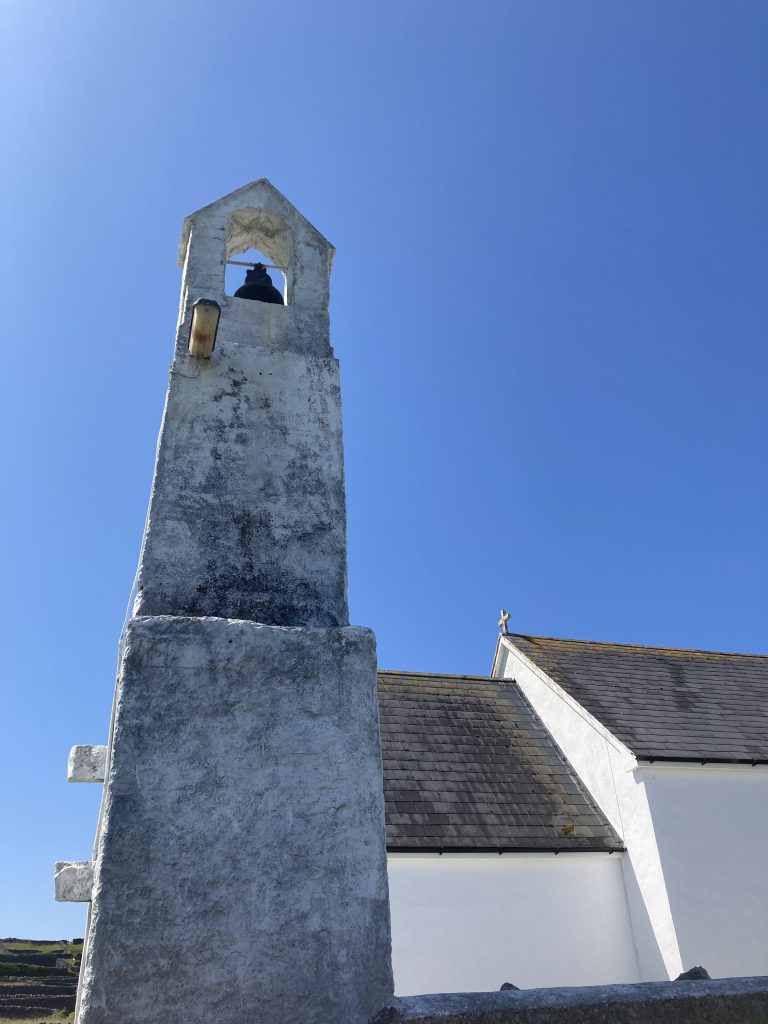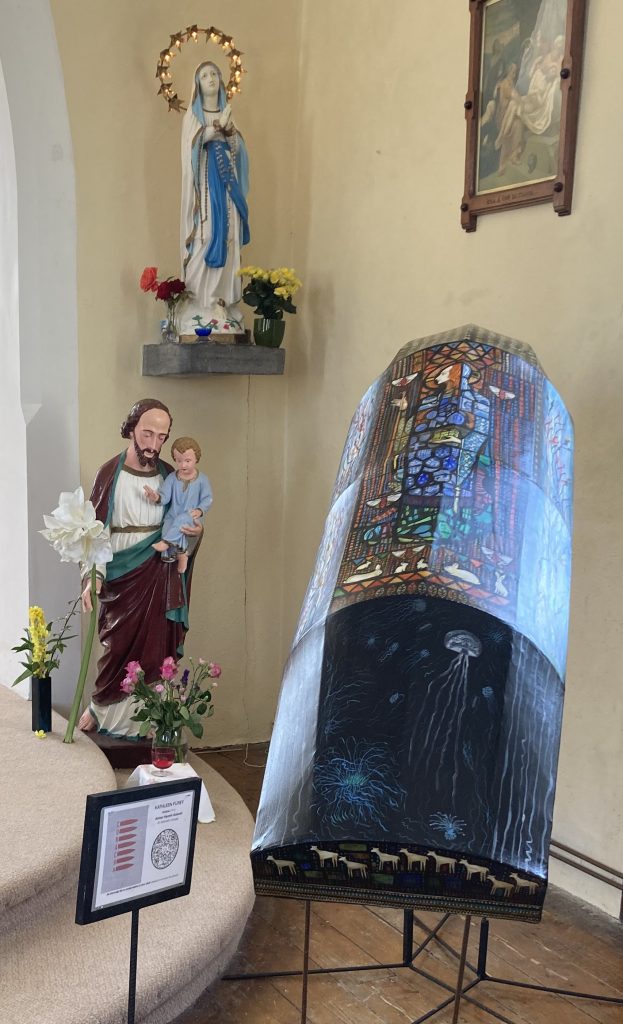
Gate Lodge at Merlin Park c1933
My Grandmother Catherine (Kate) Furey (nee Kelly) died on 26th April 1933. She was 27 years old and had six children, my father being the fourth child and aged 3 at the time of her death.
Her death certificate states ‘Late of Gate Lodge, Merlin Park, Galway’ . My father, Paddy, told me that his father (Pat Furey) worked for Mr Waithman in the marble quarry in Merlin Park and the Gate Lodge was opposite the Merlin Bar.
The painting unites the family behind the gates of the Merlin Park estate, near to the imagined Gate Lodge.
During the late ’60’s my family moved to Glenina Heights and my sister and I would take our younger siblings to the castle at Merlin Park Woods where we would climb the spiral staircase and walk around outside on top of the castle walls.





